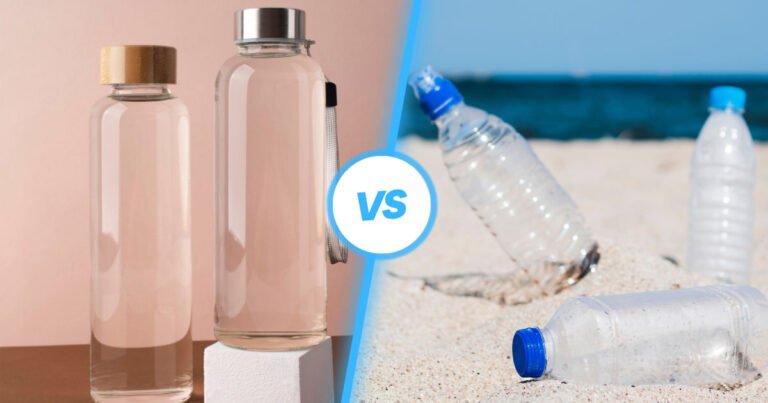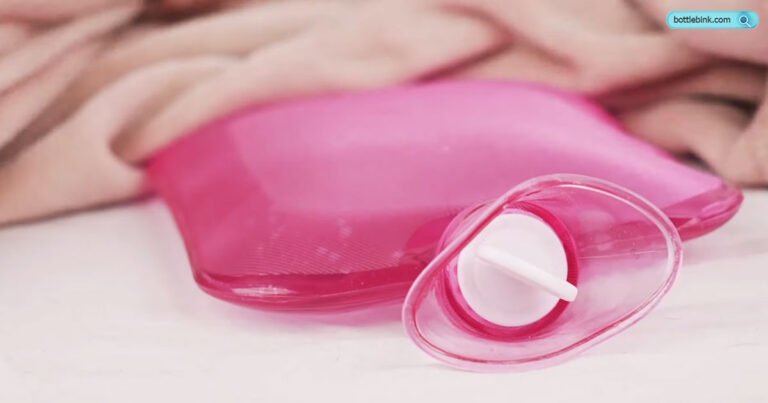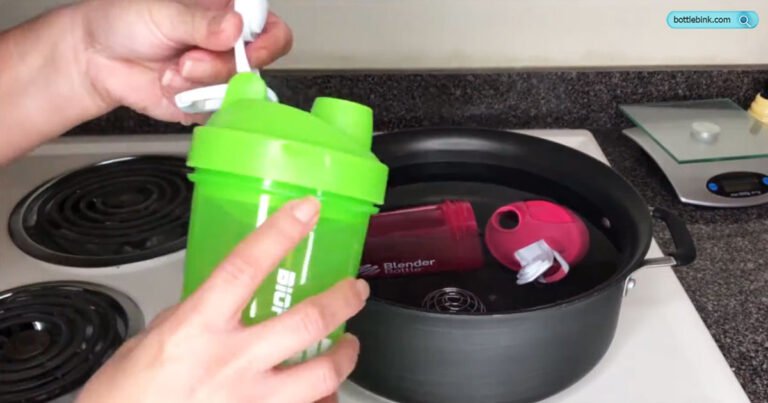How To Clean Water Bottle With Bleach? Step By Step Guide
To clean a water bottle with bleach, mix a solution of 1 tablespoon of bleach to 1 quart of water. Soak the bottle in the solution for 2 minutes, then rinse thoroughly with clean water.
Keeping your water bottle clean is essential for maintaining proper hygiene and ensuring the safety of your drinking water. Regular cleaning helps remove bacteria and odors that can accumulate in a water bottle over time. One effective method for cleaning your water bottle is using bleach, which is a powerful disinfectant.
By following the proper steps and precautions, you can easily clean your water bottle with bleach and keep it in optimal condition for everyday use. We will discuss the step-by-step process of cleaning a water bottle with bleach and provide tips for maintaining a clean and healthy water bottle.

Choosing The Right Bleach
When it comes to cleaning your water bottle with bleach, choosing the right bleach is crucial to ensure effective and safe cleaning. Concentration levels, additives and fragrances are important factors to consider when selecting the bleach that will give your water bottle a thorough clean.
Concentration Levels
Concentration levels determine the strength of the bleach and its disinfecting power. When choosing bleach for cleaning your water bottle, you want to opt for a bleach with a concentration level of at least 5-6%. This will ensure that it is strong enough to kill any bacteria or germs that may be lurking.
Bleaches with higher concentration levels, such as 8-10%, are even more effective at disinfecting and can be used for more heavy-duty cleaning. However, keep in mind that higher concentration levels can also be more corrosive and should be used with caution.
Additives And Fragrances
While some bleaches come with added fragrances and additives, it is important to be cautious when selecting bleach for cleaning your water bottle. Many fragrances and additives can leave residues or transfer unwanted flavors to your water. To avoid this, it is recommended to choose a bleach without any additives or fragrances.
Avoid bleaches that contain dyes or brighteners as well, as these can also leave residues or affect the taste of your water.
Bleach with no additives or fragrances is not only a safer choice for cleaning your water bottle, but it also ensures that your water remains pure and free from any unwanted smells or tastes.
Summary:
- Choose bleach with a concentration level of 5-6% or higher for effective disinfection.
- Avoid bleaches with additives, fragrances, dyes, or brighteners to prevent residue or taste transfer.
| Pros | Cons |
| Higher concentration levels provide stronger disinfection power. | Higher concentration levels can be more corrosive. |
| Choosing bleach without additives or fragrances ensures pure and odor-free water. | Some bleaches with additives or fragrances may leave residues or affect the taste of your water. |

Preparing The Solution
When it comes to keeping your water bottle clean, using a bleach solution can be an effective method to ensure its cleanliness and safety. Preparing the bleach solution requires careful attention to dilution and safety precautions to avoid any risks. In the following sections, we will discuss the steps to dilute the bleach and the necessary safety measures to take when using this cleaning method.
Diluting The Bleach
Before preparing the solution, it is important to properly dilute the bleach. Follow these steps to create the bleach solution:
- Fill a clean container with one gallon of water.
- Measure 1 tablespoon of bleach and add it to the water.
- Secure the container with a lid and gently shake it to mix the solution thoroughly.
Safety Precautions
When working with bleach, it is essential to prioritize safety. Here are some safety precautions to keep in mind:
- Wear protective gloves and a mask to avoid direct contact with the bleach fumes.
- Work in a well-ventilated area to prevent inhalation of harmful fumes.
- Avoid mixing bleach with other cleaning products as it can produce toxic gases.
- Store the bleach solution out of reach of children and pets.
Cleaning The Water Bottle
Cleaning the water bottle is essential to maintain its hygiene and ensure safe drinking water. Regular cleaning helps to remove bacteria, mold, and other contaminants that can accumulate inside the bottle. One effective method for cleaning a water bottle is by using bleach, which is a powerful disinfectant. Below, we will discuss the step-by-step process of cleaning a water bottle with bleach to ensure it is thoroughly sanitized.
Soaking The Bottle
Fill a sink or basin with one gallon of warm water. Add one teaspoon of bleach to the water. Submerge the water bottle in the solution, ensuring that it is completely covered. Let it soak for 5-10 minutes to allow the bleach to eliminate any bacteria and odors.
Scrubbing And Rinsing
Remove the water bottle from the bleach solution. Scrub the interior and exterior of the bottle with a bottle brush or sponge to remove any remaining residue or build-up. Thoroughly rinse the bottle with warm water to ensure that all traces of bleach are completely removed.

Drying And Storing
To effectively clean a water bottle with bleach, thoroughly rinse the bottle, then mix a bleach solution. Fill the bottle with the solution, let it sit, then rinse well before drying and storing to avoid bacteria buildup.
Air Drying
After sanitizing your water bottle with bleach, it’s crucial to let it air dry completely before storing it. Air drying helps to eliminate any remaining moisture and prevents the growth of bacteria or mold that thrives in damp environments.
To air dry your water bottle, simply place it upside down on a clean dish rack or on a clean towel. This allows the water inside to drain out, while the bottle is exposed to the air. Ensure that the bottle is completely empty and that the lid is removed to aid the drying process.
Find a well-ventilated area in your kitchen or any other appropriate space for the bottle to dry. Avoid areas with high humidity levels as this can hinder the drying process. Letting your water bottle air dry for at least 24 hours is recommended to ensure complete drying.
Preventing Mildew
To prevent the growth of mildew in your water bottle, it’s essential to follow a few simple steps during the drying and storing process. Mildew can not only affect the taste and smell of the water but also pose health risks if consumed.
Firstly, ensure that the bottle is completely dry before storing it. Any residual moisture can create a favorable environment for mildew to grow. Check the bottle thoroughly to ensure that there are no hidden areas where moisture might be trapped.
Secondly, store your water bottle in a cool, dry place. Avoid placing it in direct sunlight or near sources of heat, as this can create moisture and promote mildew growth. Find a cabinet or shelf where the bottle won’t be exposed to excessive humidity or temperature fluctuations.
Lastly, always clean and dry your water bottle before each use. Regular cleaning and drying will help keep mildew at bay and ensure that you have a safe and hygienic water container.
Maintenance Tips
Keep your water bottle clean and odor-free with this simple maintenance tip. Use bleach to effectively clean your water bottle and ensure it stays hygienic for everyday use.
Regular Cleaning Schedule
Develop a consistent schedule to clean your water bottle regularly.
- Wash thoroughly after each use with soap and warm water.
- Sanitize the bottle at least once a week to kill harmful bacteria.
- Set a reminder on your phone or calendar to maintain a routine.
Inspecting For Damage
Regularly check your water bottle for signs of wear or damage.
- Look for cracks, leaks, or unusual odors.
- Ensure the cap and seal are intact to prevent contamination.
Address any issues promptly to maintain the quality of your bottle.
FAQs Of How To Clean Water Bottle With Bleach
How Often Should I Clean My Water Bottle With Bleach?
Regularly, clean your water bottle with bleach once a week to prevent bacterial growth and maintain hygiene.
Can I Use Bleach To Clean Any Type Of Water Bottle Material?
Bleach is safe for most water bottle materials such as glass, stainless steel, and plastic. Avoid using bleach on aluminum bottles.
What Is The Proper Way To Clean A Water Bottle With Bleach?
Mix a solution of water and bleach, let it sit for a few minutes, scrub with a bottle brush, rinse thoroughly before use.
Is It Necessary To Rinse The Water Bottle Thoroughly After Bleaching?
Yes, it’s crucial to rinse the bottle thoroughly after bleaching to ensure no bleach residue remains, which could be harmful if ingested.
Conclusion
To summarize, cleaning your water bottle with bleach is a simple and effective way to eliminate bacteria and keep it safe for use. By following the steps outlined in this guide, you can ensure that your water bottle remains clean and germ-free.
Remember to rinse it thoroughly after using bleach and allow it to air dry completely. Maintaining a clean water bottle is essential for your health and well-being, so make this a part of your regular cleaning routine. Keep hydrated and stay healthy!






